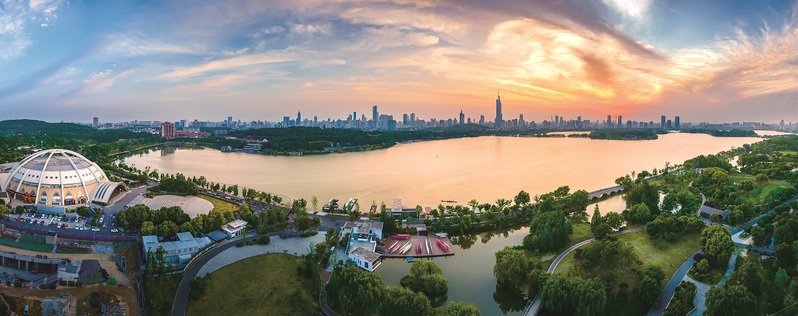
Nanjing, often referred to as Ning, is located in southwestern Jiangsu Province and the lower reaches of the Yangtze River, which stretches for approximately 150 kilometers (maximum) from 31°14’ N to 32°37’ N as well as for approximately 70 kilometers (maximum) from 118°22’ E to 119°14’ E. With a longitudinally narrow shape, it covers an area of 6,587.02 square kilometers.
Renowned as an ancient capital of China, Nanjing boasts the harmonious integration of natural and cultural landscapes with its magnificent terrain from mountains to rivers, as if it is artwork profoundly shaped by as well as a perfect gift from the nature. Thus, for centuries it has been known as “a wonderful place south of the Yangtze River that’s suitable as an imperial capital”. Sun Yat-sen, in his Plans for National Reconstruction, described it as “a place with a wonderful location”. The open plains of Nanjing are accompanied by towering mountains and deep water, and that combination makes Nanjing uniquely elegant among the world’s cosmopolitan areas.
Nanjing now serves as the capital of Jiangsu Province. This is appropriate, given that its appearance as an ancient capital coincides with an abundance of modernity. It is also an important central city in Eastern China, a key national base for scientific research and education, a key national transportation hub, the only megacity in the Yangtze River Delta, an important gateway city in the Yangtze River Delta for the accelerated development and influence of Midwestern China, part of the first group of China’s national historical and cultural cities, and a center of scenic tourism.